Games
Old Post: Ai Cho Aniki
This is a post from the late 90s, about a game called Ai Cho Aniki, which is Love Super Brother in English. I bought it in 1995, on my first trip to Japan, because I saw it in a games magazine and thought it was too amazing to pass up.

I still have it.
Interestingly, Japan has very little in the way of customer protections that I take for granted in other countries, so when I paid full price (¥8900)for it at Toys R Us and then found it at a local game shop for ¥1500, it was very hard to get a refund on the unopened game, purchased 2 hours earlier. But that price says something about the game too: year of release, discounted by almost 90%.

While preparing a this review, back in the 90s, the following was stated on IRC:
<Daemon_> its just called LOVE SUPER BROTHER, and it has semi naked man flying around, doing gay gestures. No way its a gay game, oh no.
![]() There’s not really any defence to this. I don’t believe the game is overtly homosexual, but it seems that there’s two types of people who have heard of this game: those who, after playing it for only seconds, categorize it as ‘gay’ [editor’s note: in the 90s, this mattered to people] and those who give it time and are merely confused.
There’s not really any defence to this. I don’t believe the game is overtly homosexual, but it seems that there’s two types of people who have heard of this game: those who, after playing it for only seconds, categorize it as ‘gay’ [editor’s note: in the 90s, this mattered to people] and those who give it time and are merely confused.
OK, maybe this one’s a little gay
The very first issue of a Japanese magazine dedicated to kusoge (literally: shit games) had Ai Cho Aniki on the cover. It would seem then that the Japanese consider it a crappy game, ![]() but for what reason I’m not entirely sure. Perhaps it’s the off-the-scale camp value, in the same vein as a music video about cleaning your bum in the Philippines. Maybe they also consider it a game that, as mentioned in another IRC discussion, “promotes an alternative lifestyle”.
but for what reason I’m not entirely sure. Perhaps it’s the off-the-scale camp value, in the same vein as a music video about cleaning your bum in the Philippines. Maybe they also consider it a game that, as mentioned in another IRC discussion, “promotes an alternative lifestyle”.
![]() I don’t know that this question has ever been answered satisfactorily, but one thing’s for sure: It’s damned strange.
I don’t know that this question has ever been answered satisfactorily, but one thing’s for sure: It’s damned strange.
My initial exposure to the game was in 1995 when it was first released. I saw an ad for it in a magazine, and I knew I simply had to pick it up. It was too strange, and too bizarre to let it pass me by. I totally loved it. ![]() It’s wacky in ways other strange games can’t even begin to be. The graphics are incredibly colourful and detailed, with multi-level parallax backgrounds and well animated enemies and bosses. The music is top notch as well, featuring a healthy range of styles with excellent production values, making good use of the CD format.
It’s wacky in ways other strange games can’t even begin to be. The graphics are incredibly colourful and detailed, with multi-level parallax backgrounds and well animated enemies and bosses. The music is top notch as well, featuring a healthy range of styles with excellent production values, making good use of the CD format.
![]() The gameplay is a real stunner though, and deserves a paragraph of its own.
The gameplay is a real stunner though, and deserves a paragraph of its own.
The gameplay is as weird as the rest of the game. Seemingly marrying a Street Fighter control scheme to a shoot-em-up, you have to perform ‘moves’ to shoot your weapons to any appreciable effect. Merely pressing the shoot button launches a slow tracking shot. The real power comes when, for example, you move left then right and then shoot. ![]() Or right then left. Or up then down. You get the idea – the game isn’t a frenetic blaster like other shmups can be, but when you’re constantly maneuvering around bullets and baddies while trying to pull off shot moves the pace picks up quickly indeed.
Or right then left. Or up then down. You get the idea – the game isn’t a frenetic blaster like other shmups can be, but when you’re constantly maneuvering around bullets and baddies while trying to pull off shot moves the pace picks up quickly indeed.
The main character art is done by Satoshi Nakai, the same artist who did Gynoug for the MegaDrive (Wings of Wor on the Genesis). Both games feature angels, strange underwater levels, and locomotives with faces. ![]() There’s a definite consistency to his style, even though this game runs the colourful, fantastical path and Gynoug was darker and a little more realistic. If ever any of this could be called ‘realistic’.
There’s a definite consistency to his style, even though this game runs the colourful, fantastical path and Gynoug was darker and a little more realistic. If ever any of this could be called ‘realistic’.
The presentation is kind of a mixed bag. The main title screen is functional, with only an invitation to ‘push run’. There’s no option screen or anything to complicate things. If you don’t push run you’ll be treated to a brief introduction that touches on the story from the first game in the series, Cho Aniki, 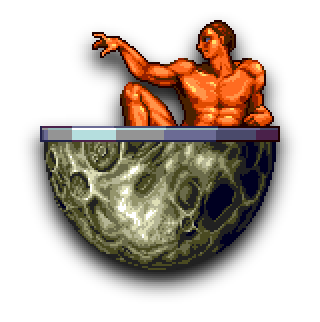 which was a much more straight-forward blaster. That’s about it for the storyline, once the game starts there’s no more mention of it, and it’s just level after level of absurdity and, on the part of the player, incredulousness.
which was a much more straight-forward blaster. That’s about it for the storyline, once the game starts there’s no more mention of it, and it’s just level after level of absurdity and, on the part of the player, incredulousness.
The game starts as many do, in space above some clouds with … floating heads, swords and a strange guy on a half-moon who throws babies at you. Then it’s a descent through the open skies where floating heads, falling angels and missiles come after you. Scoot across a city loaded with more floating heads (different, larger heads than before) and robots, and you face the first boss: A locomotive with a diving board and trampoline.
Little men climb to the diving board, jump onto the trampoline, and try to rebound into you. If you beat him he swaps the diving board for a cannon, which blasts the same little guys rapid-fire into the sky so they can rain down on you. That’s level one down.
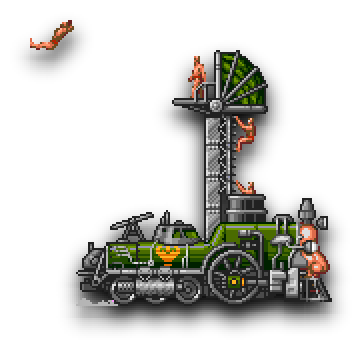
Level 2 starts off over the ocean, with more floating heads, a few torsos, the occasional nautical baddy with little men flinging bullets at you, and a mid-boss that tries to blow you into the ocean where tentacles grab you. ![]() Next up, the beautiful forest stage, where you’ll meet a scarecrow, some weird floating heads, the occasional torso, and laser-sprouting flowers that walk around. Oh, and butterfly men.
Next up, the beautiful forest stage, where you’ll meet a scarecrow, some weird floating heads, the occasional torso, and laser-sprouting flowers that walk around. Oh, and butterfly men.
There’s a huge wooden-man kind of mini-boss to defeat, then there’s a trip through a flower garden where the man with a pylon for a hat can occasionally be found hindering your progress. Also some floating heads, heads on vines, venus fly traps… Then there’s a descent into the ocean where, after meeting torsos on anchors, more missiles, strange punching fish and other deep-sea oddities, you confront the dreaded silhouetted Venus on a Half Shell.
Except it’s a guy, and he rains large eggplants at you while you blast him with your street-fighter powers.
And then there’s this guy, who has come to represent the game
It’s all very strange, but homosexual?
I haven’t got a clue.
It’s possible that this game was only given the green light for release because the PC Engine was a dying platform. In 1995 the two remaining PCE magazines also covered the upcoming sequel machine, the PCFX, as well as competing hardware like the Sega Saturn and Sony Playstation, and the Neo Geo. (You can read more about the PC Engine Magazines here.) Games for the PC Engine, which had previously had standards and controls, were suddenly leaning hard into nudity and adult themes to boost sales. And in the chaos of the console generation change, this game.
There was one Cho Aniki game before this, and several after. The third was a Super NES fighting game with brilliant graphics and gameplay that didn’t really leave much of a mark on history. And then the series switched to digitized graphics featuring real humans, and it must be said that the charming ambiguity of the series was… Entirely ejected. The Saturn and Playstation updates to the series are less ambiguous, and less interesting.
But, for a time, things were very interesting indeed. Cho Aniki kept it weird.
Screenshots
- From the Intro
- From the Intro
- From the Intro
- Venus in a Half Shell
- That Wooden Guy
- Torso!
- The Game Over Screen
- But is it gay enough?
Magazine Scans
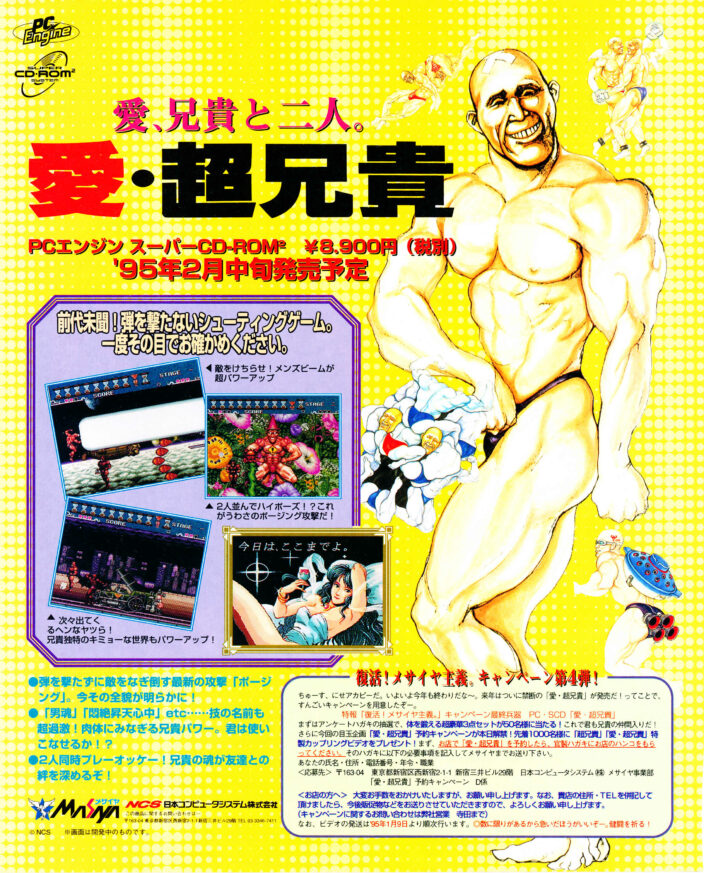 Ad for the game in PC Engine mags, 1995
Ad for the game in PC Engine mags, 1995
PC Engine Fan, Feb 1995
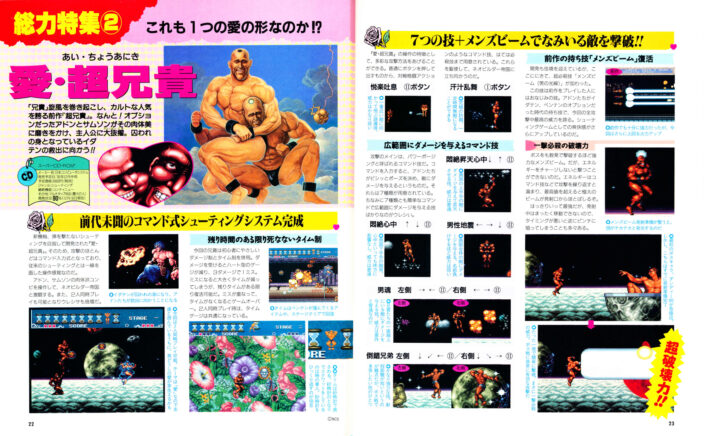
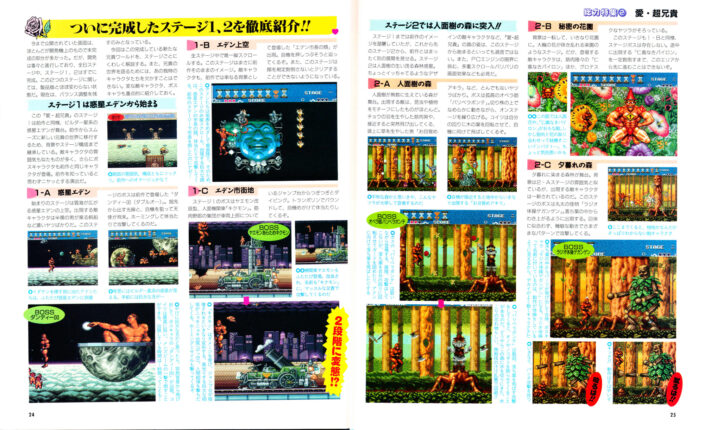
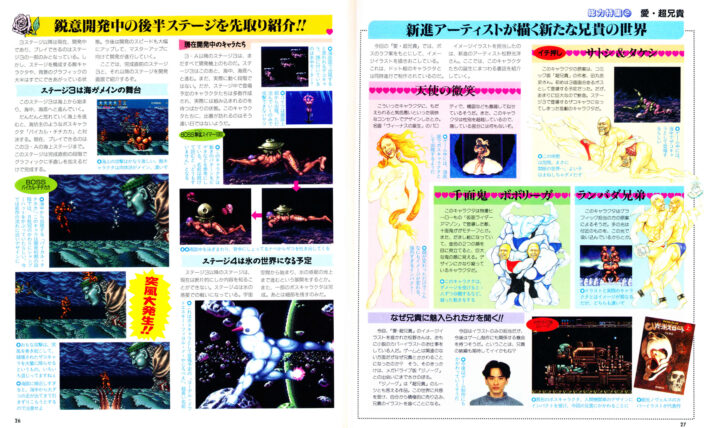
Dengeki PC Engine, Jan 1995
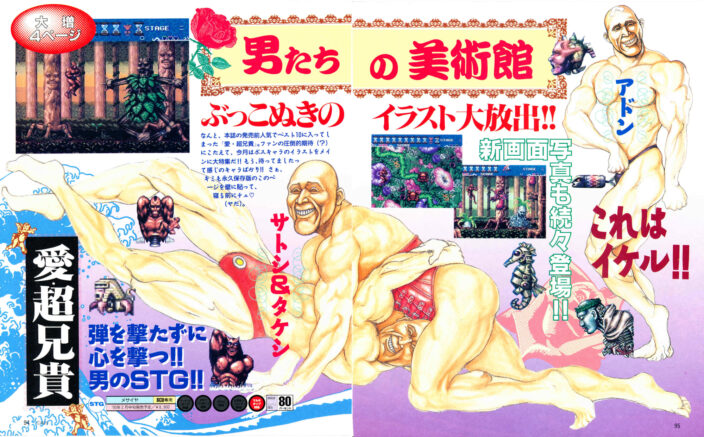
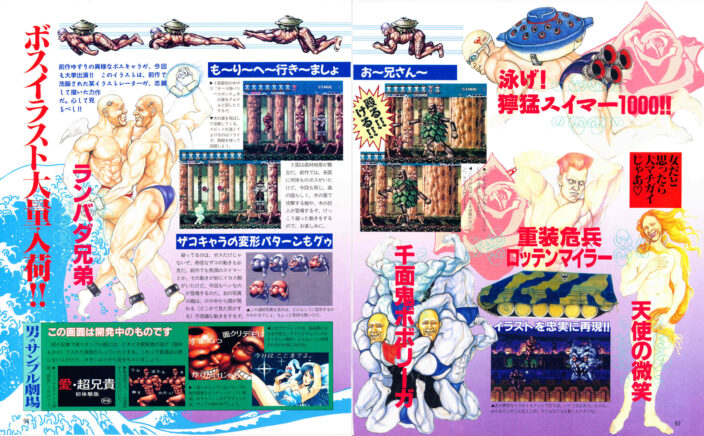
--NFG
[ Jul 11 2024 ]
| Next Post | Navigation | Previous Post |
|---|
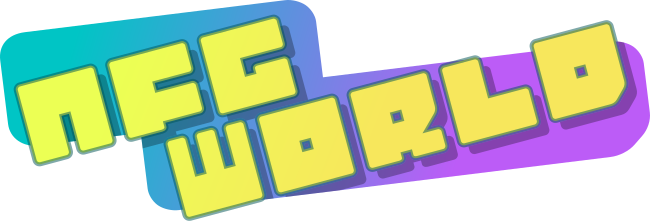
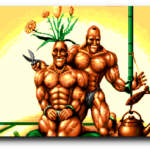
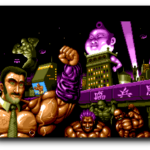

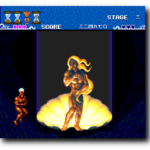
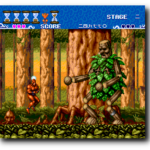
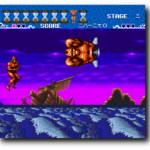
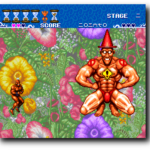
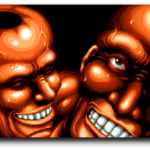
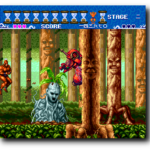
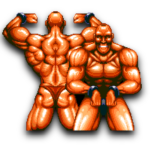


Name:
Email:
Website: